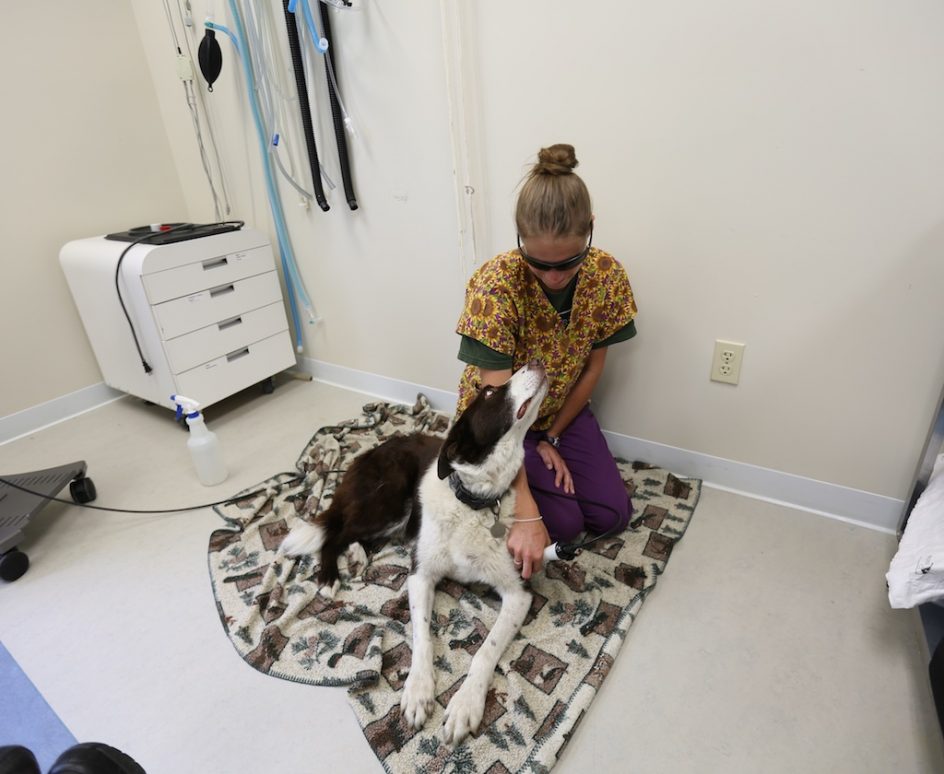
The veterinary maintenance idea is somewhat new to me, I have resisted it, I think. For some years I’ve watched the veterinary culture turn high tech and somewhat corporate, as modern health care has. Vets have a lot of expensive new equipment, and a lot of new ways to treat things, and they need lots of people to pay a lot of money for it. Veterinary care, once almost deliberately reasonable and small-scale, is neither any longer.
This threatens many elements of the human-animal bond. Some people tell me they can no longer afford to have dogs, and often avoid bringing to them vets for fear of bills they can’t afford to pay. We are learning that some vaccines and many tests are not really necessary.
So I have become somewhat wary of the new devices, vaccines, pills and approaches I see being offered. I suppose I am conservative about veterinary care, as I try to be about people care. I live on a real budget, and there is not room for everything. There is always another side to every story, and I have always liked and trusted my vets, they are, by far, the best qualified people to help me care for my animals.
I don’t believe people become vets to be rich, but vets, like everybody else, are under financial pressure these days. Having a dog is no longer cheap or easy. That has a lot of implications for dogs.
Red has brought me to this issue, which I am trying to face thoughtfully and carefully and responsibly. I have lost several border collies at Red’s age, which is nine, they work hard all of their lives and seem to simply wither and decline. I’d like Red’s story to be different.
So I have begun a dialogue with my vet, Suzanne Fariello, which is open and honest. She came to the farm to see Red run, and when he began limping badly and struggling, we worked out a comprehensive maintenance plan that costs money, but it not prohibitive. Red has arthritis, and also a spinal injury. He is also getting older.
He takes anti-inflammatory medications only when indicated, and he receives laser treatments once every two weeks with Cassandra, a vet tech I trust implicitly. He also gets a message every other week. I have to say these treatments have had a visible and marked impact on Red, his limp is gone, so is his stiffness. He is running quickly and with confidence, our new ewe Izzy ran right over him yesterday and he popped up and got her where he wanted her to go. He runs easily on the paths in the woods again, and rests comfortably.
I think vets can be drawn into the new hi-tech, hi-maintenance world of health care just as easily as the rest of the world. It’s good to be thoughtful about veterinary care. Many of my friends are farmers, and I have internalized their feeling that when a dog has moved beyond their natural life, it is time for them and us to move on. What that precisely means is different for every person and animal. Red is not nearly there.
I have never committed myself to a long-term maintenance program, and I’m not sure what the fiscal and other boundaries of animal care ultimately are for me. I am never quite sure we did the right thing in spending nearly $2,000 we didn’t have on Minnie the barn cat, when we amputated her leg. She is doing well, but we didn’t have the money and she is a barn cat and she suffered greatly for our decision. I’m not sure what the line is.
Our vet feels strongly about heartworm prevention but I have questions about it, it is very expensive and also very rare in many parts of the country. She said she had two reported cases in her practice last year, and that justified everyone’s dog getting the blood work and monthly pills. When Dr. Fariello says she saw two cases this year, that signals here that it is necessary. I’m not as sure as she is, although we are going ahead with the treatments. I’ve never known a dog up here to get heartworm and never had a dog with heartworm.
Treating them for it is hundreds of dollars more. The only two I know were rescues from Alabama, and they came with it.
Red is a remarkable dog, and I love him beyond mere words, I will go far to keep him healthy and working and in my life. I am very far from having to make great decisions about it, but I am feeling positive about the decision to maintain his health, rather than react to it. Dr. Fariello well understands my cautions and concerns. We talk about it openly and honestly.
The laser package costs $126 for four treatments, which is two months. The massage costs $45. These costs are not painless, but we can handle it, and I don’t want Red to follow in the tracks of my other border collies. But I afford it for the rest of his life, and if so, would I still wish to do it for what might be years and years? I don’t have the answer.
Red’s laser machine is a fascinating symbol to me. It costs many thousands of dollars and a lot of dogs will need to be treated to pay for it. I also see that it works, frankly beyond my expectations. What is the lesson here? Think and talk. Not much more than that. And I will keep writing about the new ways to maintain the health of a dog, ways that only a few years ago would have seemed ludicrous, even unthinkable.
Red has many good years with me and his work ahead of him. How far will I go down this road? I don’t know, it’s not time to decide. But I will be thinking about it.
